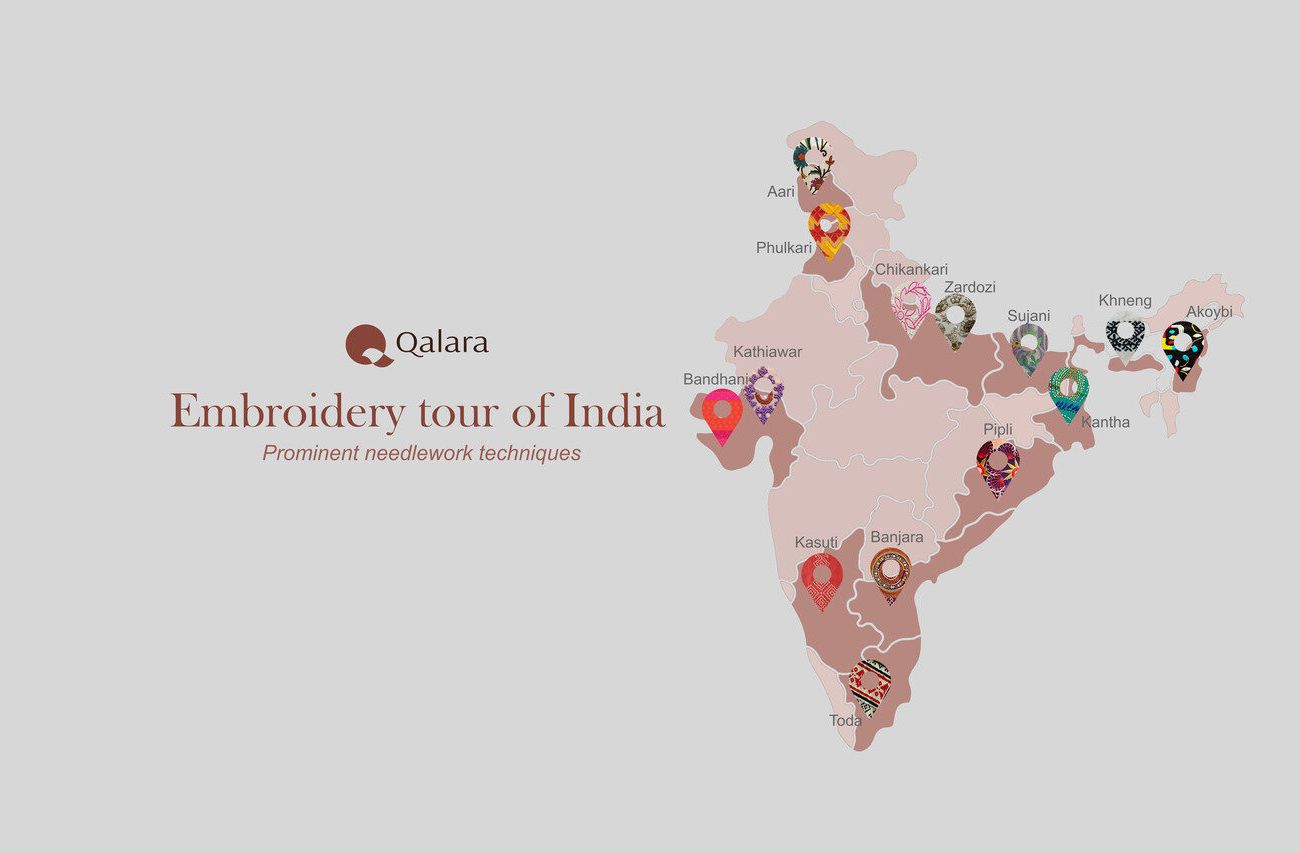
When to start sourcing for the holiday season
he holidays are upon us. The time to celebrate and have jolly good fun is inching closer day by day. Come holiday season, consumers are more likely to splurge big time on shopping. Bypassing the pre-pandemic levels for the first time, a survey by Deloitte predicts that the average expected holiday spendings will stand at $1652 in 2023. With reinforcements like limited-time offers, holiday edition releases, seasonal coupons, countdown clocks and festive marketing in full-swing, there is no stopping customers from indulging in some retail therapy. To cater to their expectations in the best way, we bring you a guide on when to start sourcing.
Typically, during this time of the year, the urgency to join the buying frenzy settles at an all-time high. But is also important to heed the fluctuations that various socio-economic factors shall project on holiday consumption this year. No sooner had the world resorted to the pre-pandemic days than various issues of global relevance started crawling to the foreground.
From inflation and rising poverty to increased crimes against South Asians and the conflict in the Levant, the socio-economic landscape looks bleak and rickety every passing day. As it goes, the implications of this unrest might befall the holiday market. Around 17% of those surveyed said their savings have dwindled and they plan to cut back on holiday expenditures to be able to start repaying their student loans. A senior retail analyst from Coresight Research asserts that the patterns of holiday spending have changed. He alludes to the ‘smearing effect’ whereby retailers like Amazon and Walmart initiate holiday sales as early as October, elongating the holiday sales season.
But rest assured, despite the volatile state of affairs around, the demand will see a noticeable rise if not a drastic upward spike. To cater to the escalating demand, it becomes significant for businesses to stay on the top of their game. Across all fronts, from sourcing and merchandizing, to marketing and sales, businesses must be thorough and tap onto the consumer habits that they know shall recur during the holidays. Planning well ahead of time and stocking up on inventory can help boost the sales manifold! Manoeuvring the demand, however, is all part of systematic plan and action.
With the advent of the festive season, Qalara does the holiday-math so you know when to start sourcing and keep your inventory brimming for the influx of customers that are likely to pour in.
Planning is key
Here are a few tactics to adopt in order to ensure your business can handle the holiday hubbub.
• A great way to get a head start is to devise a buying calendar that annotates important timelines
• Mark the important holidays and festivals, conduct extensive research on popular trends as well as the predictions on consumer reception
• Analyse past holiday seasons to predict the demand. Do consider the market trends while at it
• Find out when the demand for holiday-centric products begins and peaks
• Estimate the sourcing timelines as per the data found. Consider supplier reliability as well as the order fulfilment cycle during this step to make an accurate sourcing window. Check out our blog on different kinds of order types for wholesale sourcing on Qalara and the lead time each of them offer
• Optimize your online presence. Set up digital showrooms for product visualizations and use AI to the best of your capacity. In a 2021 study by LivePerson, 45% of online shoppers expressed how they would like to use virtual showrooms for increased convenience. Read more about how to leverage AI to drive sales here
• Ensure your website is user-friendly and can handle increased traffic. Also ascertain that it highlights the holiday promotions and gift ideas
• If you have a physical store, arrange the store layout for the holiday rush. Shoppers should be offered easy navigation and clear access to products. Display attractive holiday-themed standees and banners
• Holistic research must be conducted with regards to the buyer behavior and what drives them to make the purchase/s. Build your inventory accordingly so as to avoid instances of overstocking or understocking
• Decide much in advance the kind of offers and sale-discounts you’d like to put out. Read more: Top 7 winning holiday discount strategies. These redeemable deals will encourage holiday shoppers to fill their carts. After product quality, it is the available discounts that primarily encourage consumers to pick a brand and a product. Also, a good 66% holiday shoppers plan to shop early on to avail offers and discounts and stave of inflation. Therefore, ensure you have sufficient inventory to meet the expected demand
Now that we have looked at the ‘hows,’ let us proceed to explore the ‘whens’ of the topic at hand.
When to start sourcing
The holiday period is the peak retail season. It can drag in a plethora of clients and maximize your sales by leaps! Preparedness, hence, is key to ensure a smooth holiday season for your business. As per data from NRF’s (National Retail Foundation) Consumer Holiday Survey, the per-person holiday-expenditure for 2022 amounted to $832.84, and about 62% shoppers agreed that the holiday season warranted active spending!
Chalk out critical components like stock management, expected demand, supplier relationships, shipping & fulfilment, and other contingency options too. Once you chart a thorough plan that shall help you meet the holiday demand, the next obvious step is execution.
For B2C businesses, sourcing is the crucial aspect of planning. It is important to remember that customers start shopping way in advance for various reasons such as to spread out their budgets, to avoid last-minute shopping, to avoid crowds, to avail off attractive promotions and discounts, and to avoid missing out on specific items due to the foreseeable demand. Around 46% of those surveyed by NRF in 2021 started their holiday shopping earlier than usual. Based on the data online, let us look at the optimum timelines when the buyer interest peaks and accordingly estimate the best time for retailers to start sourcing.
Here are some general timelines explaining when customers typically start looking to make purchases for Halloween, Thanksgiving, Christmas, New Year’s, and Easter.
1. When to source for Halloween (October 31st)
Customer shopping: Halloween enthusiasts leave no stone unturned to channel their spookiest avatars during this holiday. According to NRF’s annual survey, Halloween spending is expected to reach a record $12.2 billion this year! Not just costumes, consumers shop early for festive décor too. They start looking for Halloween items as early as late August!
There is a significant increase in demand in September and early October. However, the peak shopping period occurs in the two weeks leading up to Halloween. To cater to the early birds, make your Halloween products available to shop by late August or early September.
Start sourcing: Ideally, begin sourcing Halloween-related products, such as costumes, decorations, and candies, around 6-9 months in advance. This shall maintain a safe buffer time for procurement and inventory management.
Check out Qalara’s Halloween collection here.
2. When to source for Thanksgiving (late November)
Customer shopping: Searches for Thanksgiving items typically start rising from September till early to mid-October. There is a peak in this demand during the first two weeks of November. Having your products in place by early October is advisable to capture this market.
Last year, NRP estimated that 196.7 million Americans shopped online and in stores around the Thanksgiving holiday with each consumer spending an average of $325.44 for their purchases! The top items bought were clothes and apparels, toys, gift cards, books, video games, food & candy, and electronic products.
Start sourcing: Ideally, begin sourcing for Thanksgiving-related products, especially those related to home decor, tableware, and special foods, around 6-9 months in advance. This shall allow ample time for production, shipping, and delivery.
Check out Qalara’s Thanksgiving collection here.
3. When to source for Christmas (late December)
Customer shopping: The spirit of yuletide is omnipresent and the zeal to shop for it transcends any set margin of time. According to data, there is a high search volume for Christmas-related products throughout the year. A strong volume is observed in September through November, peaking in October.
NRF looked at the consumer purchasing trends of 2022 and noted that almost 46% of consumers started their holiday shopping before November. 41% planned to shop in October, while 39% planned to tackle it in November. Thus, having your products in place by early October is crucial to capture the early bird shoppers.
Start sourcing: Due to the extensive demand, the sourcing timeline is longer during Christmas. Given the zestfulness around this holiday, it is safe to be prepared way ahead of time. So, start sourcing Christmas products, including decorations, gifts, and holiday-themed items, at least 9-12 months before the holiday season to ensure availability and commitment to the pre-set timelines.
Check out Qalara’s Christmas collection here.
4. When to source for New Year’s Holiday (early January)
Customer shopping: Marking a fresh start, this day is all about limitless merriment and welcoming in the new year with your loved ones. Customers usually start looking for New Year’s products and party supplies in November, and the searches have been recorded to peak in December. There is an evident spike in demand during the last two weeks of December. Ensure your products are accessible by mid-December for a competitive advantage.
Start sourcing: For New Year’s products, like party supplies, decorations, and special attire, begin sourcing around 6-9 months prior to New Year’s Eve. This timeline shall allow you to have a variety of products available.
5. When to source for Easter (late March or April)
Customer shopping: With Easter signifying new beginnings and the celebration of hope, it emerges as an important occasion that witnesses whopping customer spendings. NRF reported in March 2023 that consumers had planned to spend a collective $24 billion on Easter shopping! They often start seeking Easter-related items in late February, with a peak in demand in the weeks leading up to Easter, which falls between late March and April. Having your products ready by late January or early February, thus, is prudent.
Start sourcing: Sourcing for Easter products, which can include décor offerings, Easter eggs, and special treats, should commence around 6-9 months in advance of the holiday. On average, around 54% consumers asserted they will buy Easter gifts from discount stores that offer easy bargains and enticing deals. This is just a reminder to build your inventory being mindful of the type of discounts you plan on offering as items might sell out faster.
Check out Qalara’s Easter collection here.
Conclusion
Do your timelines look similar to the ones listed above? Do let us know in the comment below! Also, enlighten us by sharing some smart tactics you follow to ensure smooth operations during holidays.
Depending on a lot of variables including curation, lead time, fulfilment process, supplier reliability, shipping, and more, the procurement of stock can get affected for better or for worse. For retailers, being judicious and taking preventative measures are the cornerstones to achieving holiday success! This is why it is so important to understand the intricacies of consumer habits, heed the shift that holiday trends usher in, and know exactly when to source. Qalara hopes you harness the power of seasonal retailing and have a bountiful clientele this holiday season!
~ Written by Gauri S






Leave a Reply